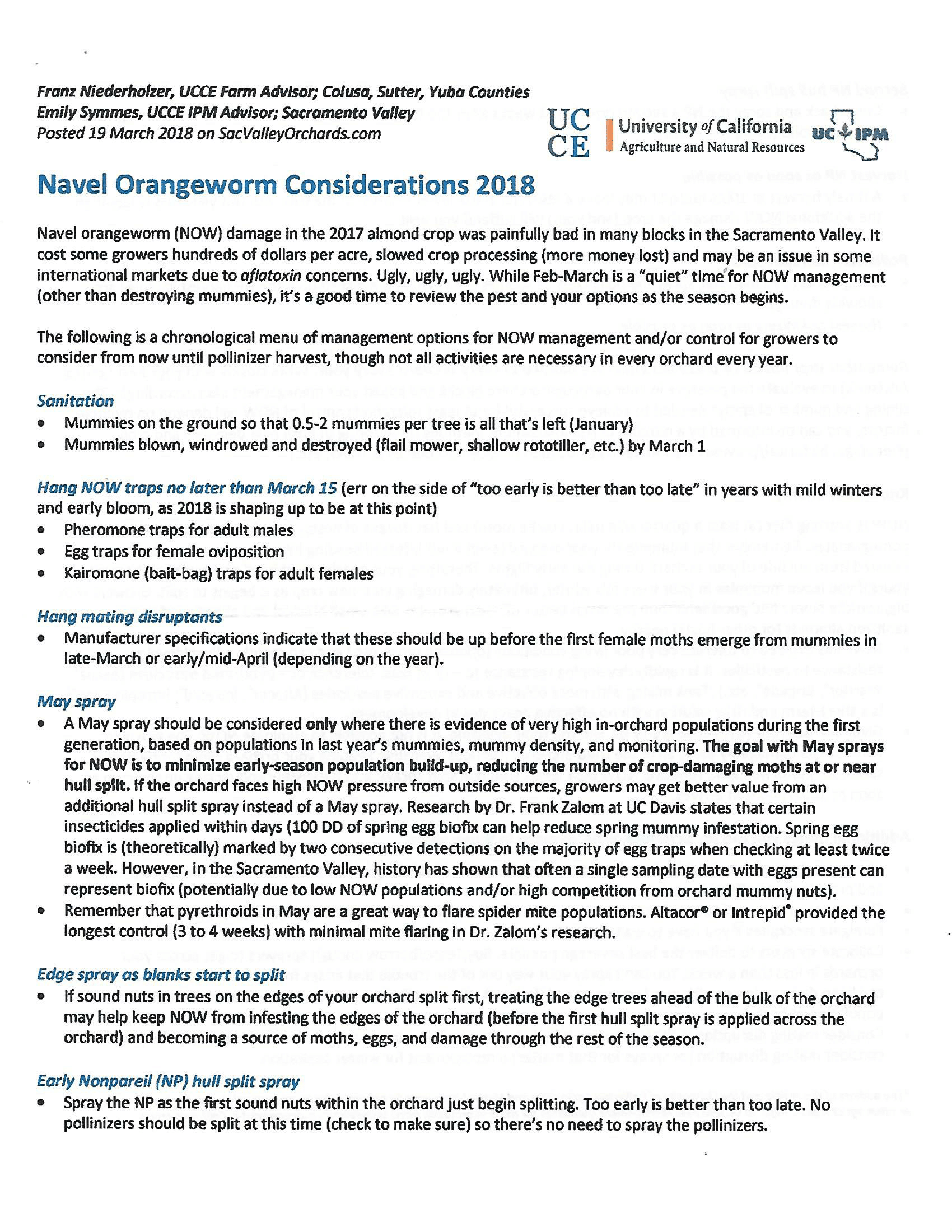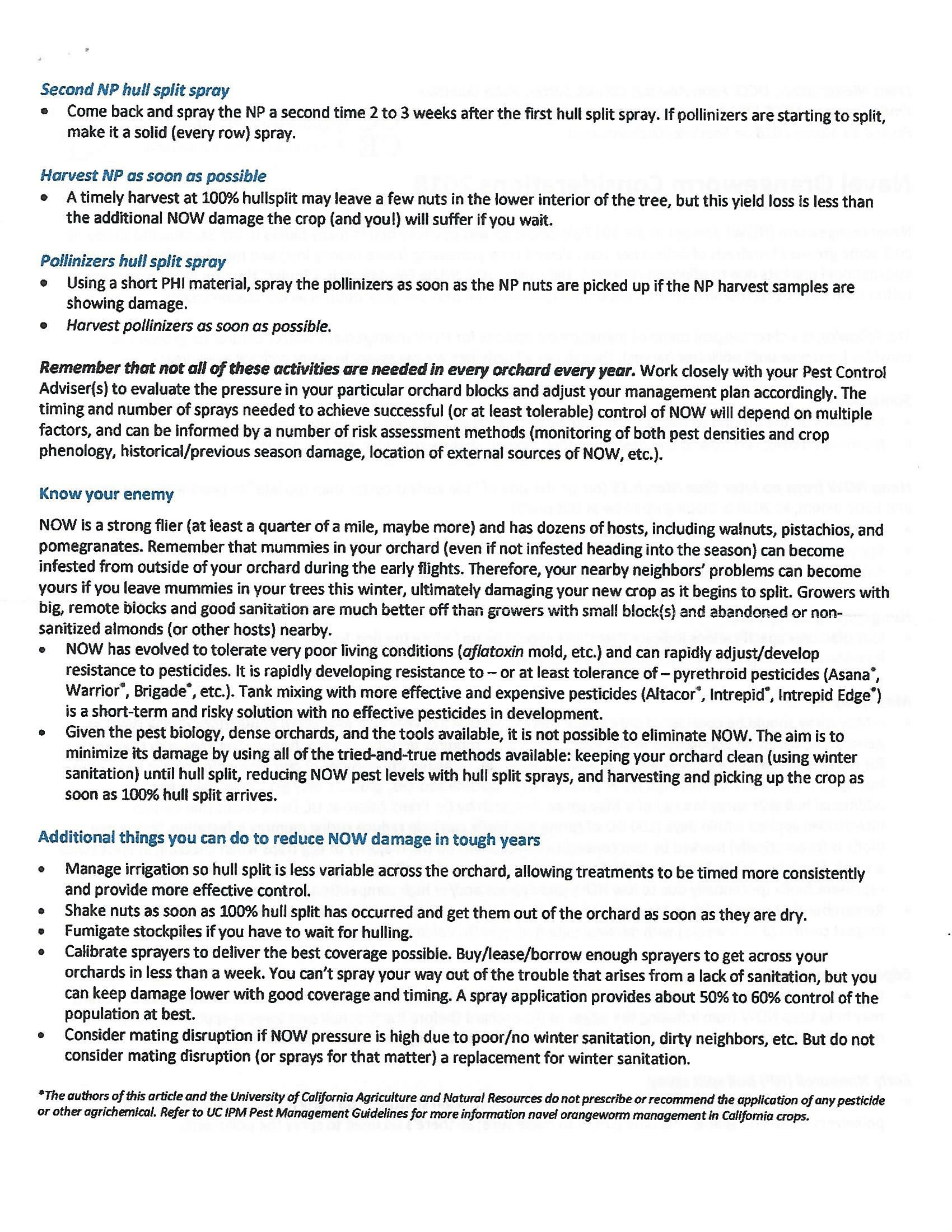The picture that University of California Orchard Systems Advisor Dani Lightle presented to growers was dire: Navel orangeworm damage is on the rise and the pest is becoming resistant to more and more pesticides.
“This is coming at a huge cost to growers,” Lightle said to almond growers at a University of California Field Day.
She shared a damage calculation with growers that showed, assuming 2,500 pounds an acre in almonds, 10% damage caused a grower a loss of $1,742 per acre.
Ten percent might seem extreme, but at the same Field Day, Mark Jansen of Blue Diamond Growers said that level happened to good growers in 2017.
The outlook going forward could be even worse, Lightle said, citing a range of factors including plentiful hosts, growing navel orangeworm resistance to pesticides, and warming weather that allows for an extra generation of the pest in the course of the season.
“We have a lot more hosts...we have more almonds, more walnuts, more pistachios,” she said. A huge infestation of navel orangeworms came in one case because of a neighboring abandoned olive orchard, Lightle said. “That orchard over there is now a source for this one, even though this one is well-maintained.”
“May spray” of pesticide may not make a dent in navel orangeworm if a neighbor is a source of problems, she said, given that the pest can fly a quarter mile or further.
Overall May spray economics can be seen in the handout above.
For hull split sprays, Lightle recommended slow, heavy sprays, to avoid getting incomplete control of the pest.
Bigger picture, pesticide resistance is a concern. Here’s some detail in an excerpt from materials Lightle provided to growers; the full handout is at the end of this post.
- “(NOW) has evolved to tolerate very poor living conditions (aflatoxin, mold, etc.) and can rapidly adjust/develop resistance to pesticides. It is rapidly developing resistance to -- or at least tolerance of -- pyrethroid pesticides (Asana*, Warrior*, Brigade*, etc.). Tank mixing with more effective and expensive pesticides (Altacor*, Intrepid*, Intrepid Edge*) is a short-term and risky solution with no effective pesticides in development.”
- * The authors of this article and UC ANR do not prescribe or recommend the application of any pesticide or other agrichemical. Refer to UC IPM Pest Management Guidelines for more information on navel orangeworm management in California crops.
“There’s not many (pesticide) options coming down the pipeline for navel orangeworm,” Lightle said to the crowd.
So what can growers do, with sprays losing effectiveness and growing navel orangeworm populations?
One tool that’s showing promise is traps in early March, and mating disruptants in late March through mid-April, when the first female moths emerge from mummies.
Mating disruption has reduced navel orangeworm by 50% in some blocks, Lightle told growers.
Last but not least, growers should prioritize sanitation.
“I want to talk about how we need to put the integrated back in integrated pest management,” Lightle said. “Those mummy nuts in the trees are where your overwintering population is.”
“You’re creating your own mess (by not sanitizing),” she said. “It’s not an easy thing, but the idea is to avoid starting with a population that’s already above your head. If they’re above your head, you’re not going to be able to spray your way out.”


